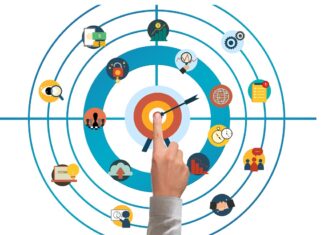AMAB, which stands for Assigned Male at Birth, is a term used in the context of gender identity and transgender studies. It refers to individuals who were identified as male when they were born, based on their external genitalia and physical characteristics. AMAB is one of the many ways society has historically classified and categorized people based on their biological sex. The concept of AMAB plays a significant role in shaping societal expectations, gender roles, and the construction of gender identity.
The term AMAB acknowledges the difference between sex and gender. Sex refers to the biological and physiological characteristics that define male and female, primarily determined by chromosomes and reproductive organs. On the other hand, gender is a social and cultural construct that encompasses the roles, behaviors, and identities that society attributes to individuals based on their perceived sex. While AMAB individuals may have been assigned a male sex at birth, their gender identity may not necessarily align with this assignment.
The recognition of AMAB as a distinct concept is essential in understanding and supporting the experiences of transgender and gender non-conforming individuals. It highlights the complex interplay between biological sex and gender identity, emphasizing that gender is not solely determined by one’s physical characteristics. For many AMAB individuals, their gender identity may not align with the expectations and assumptions imposed upon them based on their assigned sex at birth.
Understanding AMAB is crucial in creating a more inclusive and accepting society. Transgender and gender non-conforming individuals often face numerous challenges related to their gender identity. By acknowledging the distinction between assigned sex at birth and gender identity, we can better appreciate the diversity of human experiences and provide support and acceptance to those whose gender identity does not align with the binary norms.
AMAB individuals may experience various gender dysphoria, a term that describes the distress or discomfort resulting from the incongruence between one’s gender identity and assigned sex. This dysphoria can manifest in different ways, impacting an individual’s mental and emotional well-being. For some AMAB individuals, the journey towards self-discovery and acceptance may lead them to explore their gender identity further, potentially identifying as transgender, non-binary, genderqueer, or any other gender identity that aligns with their true self.
Support and understanding from family, friends, and society at large can significantly impact the well-being of AMAB individuals. It is essential to create environments that foster acceptance, respect, and validation of diverse gender identities. By challenging traditional gender norms and stereotypes, society can reduce the stigma and discrimination faced by AMAB individuals and provide them with the freedom to express their true selves authentically.
The medical and psychological communities play a vital role in supporting AMAB individuals on their gender journey. Mental health professionals trained in gender-affirming care can provide essential guidance and support during the process of self-discovery and identity exploration. Medical interventions, such as hormone therapy and gender-affirming surgeries, may also be part of the transition process for some AMAB individuals seeking alignment with their gender identity. It is crucial that these healthcare services are accessible, safe, and respectful of an individual’s autonomy and choices.
AMAB individuals may also face unique challenges in areas such as employment, education, and housing due to discrimination and bias. Addressing these issues requires the implementation of anti-discrimination laws and policies that protect the rights of transgender and gender non-conforming individuals. Moreover, educating the general public about gender diversity and dispelling misconceptions can foster a more empathetic and inclusive society.
Another critical aspect of understanding AMAB is recognizing that gender identity is not fixed and may evolve over time. Some individuals may initially identify as cisgender (their gender identity aligns with their assigned sex) but later come to understand and embrace a different gender identity. Others may find that their gender identity is fluid, meaning it may fluctuate or change over different periods of their lives. Society must embrace the fluidity of gender identity and respect an individual’s right to define and express themselves authentically.
Supportive communities and organizations that advocate for the rights of AMAB individuals and other gender minorities can offer vital resources, education, and peer support. These spaces can be empowering, allowing individuals to connect with others who share similar experiences and navigate the challenges of self-discovery and acceptance together.
When discussing AMAB, it is essential to recognize the intersectionality of gender identity with other aspects of an individual’s identity, such as race, ethnicity, religion, and socioeconomic status. Transgender and gender non-conforming individuals who are also part of marginalized communities may experience compounded discrimination and systemic barriers. Understanding and addressing these intersectional challenges are necessary steps towards achieving a more equitable society for everyone.
Educating ourselves and others about the experiences of AMAB individuals is crucial in promoting empathy and compassion. Open discussions and increased awareness can help dispel myths and misconceptions surrounding gender identity, ultimately fostering a more inclusive and supportive environment. It is essential to approach these conversations with respect, actively listening to the experiences of AMAB individuals and being mindful of the impact of our words and actions on their well-being.
Furthermore, advocating for policy changes that protect the rights of transgender and gender non-conforming individuals is paramount. This includes advocating for legal recognition of gender identity, access to healthcare services that are sensitive to the needs of AMAB individuals, and anti-discrimination measures in all aspects of life. By actively challenging discriminatory practices and attitudes, we can work towards dismantling the barriers that prevent AMAB individuals from fully participating in society.
Families of AMAB individuals also play a significant role in supporting their loved ones on their gender journey. Family acceptance and understanding can have a profound positive impact on the mental health and well-being of AMAB individuals. Providing a safe and affirming environment at home allows individuals to explore and express their gender identity freely, without fear of rejection or judgment. Family members can access resources and support groups to help them navigate their own emotions and gain insights into the experiences of their AMAB loved ones.
Educational institutions and workplaces have an essential role in creating inclusive spaces for AMAB individuals. Implementing policies that protect against discrimination based on gender identity and fostering a culture of respect and acceptance can make a significant difference. Training staff and faculty to understand and support diverse gender identities can contribute to a more welcoming and affirming environment for all individuals.
Language is a powerful tool in shaping perceptions and attitudes. Using inclusive language that respects an individual’s chosen name and pronouns is a simple yet meaningful way to show support for AMAB individuals and gender diversity in general. Misgendering or deadnaming individuals (using their birth name instead of their chosen name) can be hurtful and invalidating. By being mindful of the language we use, we can contribute to a more respectful and affirming society.
Prominent figures in the media, entertainment, and other public spheres also have a responsibility to promote understanding and acceptance of gender diversity. Positive representation of AMAB individuals in the media can challenge stereotypes and foster empathy among the general public. It can also provide role models for other AMAB individuals who may be struggling with their gender identity and seeking validation and support.
Despite significant progress in recent years, there is still much work to be done to create a world where AMAB individuals and all gender minorities can live without fear of discrimination or violence. Advocacy and activism are crucial in driving change and pushing for a more inclusive society. Organizations and individuals fighting for transgender rights and gender equality continue to play a critical role in advancing these goals.
Moreover, research and data collection on the experiences of AMAB individuals are essential in informing evidence-based policies and interventions. Understanding the challenges and needs of this population can guide the development of targeted support programs and services.
In conclusion, the term AMAB represents an acknowledgment of the complexity of gender identity and the need to distinguish between assigned sex at birth and an individual’s true gender identity. Understanding and supporting AMAB individuals are fundamental steps towards building a society that celebrates diversity and provides equal rights and opportunities for everyone, regardless of their gender identity. It requires collective efforts from individuals, communities, institutions, and policymakers to challenge traditional norms, combat discrimination, and promote empathy and acceptance. By working together, we can create a world where AMAB individuals and all gender minorities can thrive and live authentically.























